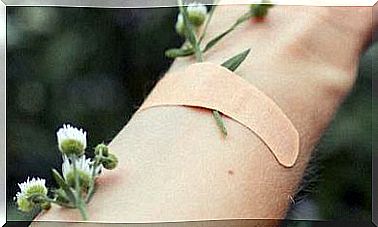12 Low-carbohydrate Pastry Flours
Low-carbohydrate diets are suitable for low-calorie diets and, in general, to control blood sugar levels. We show you which are the 12 lowest carbohydrate flours.

Low carbohydrate baking is a trend that everyone can benefit from and especially those who have to control their blood sugar levels, such as people with overweight, metabolic syndrome or diabetes.
Instead of conventional flours made from cereal grains, flours made from seeds, legumes and nuts are used. These flours often have the fat removed so that they bind better to the rest of the ingredients and create a dough consistency.
The right low-carbohydrate flour for every type of pastry
Chia seed flour
Chia seed flour is high in protein, calcium, fiber, and omega-3 fatty acids. Thanks to its high expansion power, chia flour is suitable as a substitute for eggs and as a binder for the dough.
Nutritional values per 100 grams:
- Calories: 310 kcal
- Fat: 8 g
- Carbohydrates: 0.3 g
- Fiber: 35 g
- Proteins: 33.5 g
Hemp flour
Hemp flour is made from partially defatted and unpeeled hemp seeds by cold pressing.
Its protein does not make dough like that of wheat, so it must be combined with some binder. Hemp flour has a nutty flavor and is suitable for bread, cakes, tortillas, and for thickening sauces and soups.
Nutritional values per 100 g:
- Calories: 368 kcal
- Fat: 9.4 g
- Carbohydrates: 32 g
- Proteins: 28.7 g
- Dietary fiber: 20.3 g
Hazelnut flour
Hazelnut flour tastes great, is great for making cookies and cakes, and gives muesli a distinctive note. The flour is obtained by cold pressing the hazelnuts. After this process, it is partially defatted and only contains approximately 17% hazelnut oil (the result is not the same as when you grind the hazelnuts yourself). Hazelnut flour is very swollen and should always be processed with a binder flour.
Nutritional values per 100 grams:
- Calories: 407 kcal
- Fat: 17 g
- Carbohydrates: 24.5 g
- Proteins: 37.5 g
- Dietary fiber: 22.7 g
Chickpea flour
Chickpea flour is made from peeled and ground legumes. It has a sweet, nutty flavor and is high in protein. Chickpea flour makes bread, muffins, pizza, and sweet cakes soft and light. Mixed with water, it can be used as an egg substitute in vegan diets.
Nutritional values per 100 g:
- Calories: 362 kcal
- Fat: 6.7 g
- Carbohydrates: 50 g
- Protein: 20 g
- Dietary fiber: 11 g
Recipe: Vegan Potato Omelette
Coconut flour
Coconut flour is made from white, defatted, dried and ground coconut pulp. It has a slightly sweet and coconut flavor. When using it, the rest of the ingredients should combine well with the coconut because it has a strong flavor.
Nutritional values per 100 g:
- Calories: 320 kcal
- Fat: 11.8 g
- Proteins: 19.3 g
- Dietary fiber: 50.5 g
Recipe: Coconut Matcha Bites
Konjac flour
Konjac flour is obtained from the Asian konjac root, it is rich in fiber, low in calories and carbohydrate free. It is suitable as a binder flour for bread, cookies and cakes, as it swells a lot. One of its advantages is that it does not contain fat or carbohydrates, making it extremely light.
Nutritional values per 100 g:
- Calories: 168 g
- Fat: 0 g
- Carbohydrates: 0 g
- Protein: 2 g
- Dietary fiber: 80 g
Pumpkin seed flour
Pumpkin seed flour is made from ground, partially defatted kernels. It has a nutty flavor and contains a lot of protein and fiber. It is especially suitable for bread and cakes, as well as for pasta, or to round sauces.
Nutritional values per 100 g:
- Calories: 385 kcal
- Fat: 9.3 g
- Carbohydrates: 4.1 g
- Proteins: 65 g
- Dietary fiber: 10 g
Linseed meal
For flaxseed meal, the seeds are cold pressed and then ground. Flaxseed meal is rich in fiber, minerals, omega-3s, and protein. It swells a lot and is more suitable as a binder flour and should only partially replace conventional flour. Its nutty flavor makes it suitable for bread, rolls, and cakes.
Nutritional values per 100 g:
- Calories: 331 kcal
- Fat: 13 g
- Carbohydrates: 6 g
- Proteins: 37 g
- Dietary fiber: 44 g
Recipe: Cranberry Muffins with Flaxseed
Almond flour
Almond flour is gluten-free, low-carb, and a mineral-rich alternative to wheat flour. Provides volume and gives baked goods an exquisite note. It is suitable for cookies, cakes or pancakes. Cold pressing makes the almond flour lose fat, thus reducing the caloric value.
Nutritional values per 100 g:
- Calories: 375 kcal
- Fat: 12 g
- Carbohydrates: 10.7 g
- Proteins: 45.3 g
- Dietary fiber: 21.4 g
Recipe: Vegan Gluten-Free Pizza
Soybean flour
Soy flour is made from dried soybeans. It is available as a whole variant (20%) and low in fat (1%). It has a slightly sweet taste, and a high protein content, so it binds cakes, breads and buns well. Soy flour must be combined with other flours, otherwise it will dominate its flavor. You should also pay attention to hydration, as it retains a lot of water.
Nutritional values per 100 g:
- Calories: 348 kcal
- Fat: 3 g
- Carbohydrates: 22.4 g
- Protein: 50 g
- Dietary fiber: 15.5 g
Recipe: Vegan Croquettes
Lupine flour
Lupine flour is obtained from peeled and ground lupins and is suitable for sweet and savory doughs in cakes, pastries and bread. It makes the dough turn yellow. Sweet lupine flour should be used with a binder flour, because it has no “sticky” protein.
Nutritional values per 100 g:
- Calories: 324 kcal
- Fat: 12 g
- Carbohydrates: 10 g
- Proteins: 43 g
- Dietary fiber: 2 g
Walnut flour
Nut flour, like hazelnut flour, goes perfectly with cookies and cakes and is used a lot during the holiday season. Partially defatted flour is rich in protein and fiber, but is gluten-free. Therefore, if volume is desired, it should be used with a binder flour.
Nutritional values per 100 g:
- Calories: 478 kcal
- Fat: 30 g
- Carbohydrates: 15 g
- Protein: 30 g
- Dietary fiber: 14g
Substances to bind and to give greater consistency
- Bamboo fiber: suitable as a baking aid for spreading, flouring and dusting. Bamboo fiber does not contain carbohydrates and binds the dough thanks to its high fiber content. If bread and rolls are breaded in bamboo fibers before baking, a nice crust is achieved.
- Wheat Gluten: Low-carb flours lack the gluten found in wheat and other grains. If you are not intolerant or sensitive to gluten, it can be added to optimally bind doughs made with low carbohydrate flour. However, the cakes will no longer be suitable for celiacs.
- Guar gum: used primarily as a thickening and gelling agent. It is tasteless and comes from an Asian legume plant. Mix a teaspoon of guar gum with a cup of flour substitute and you will have the right consistency.
- Carob flour : The flour is made from the fruit of the carob tree. It can be mixed with hot and cold liquids and has a high swelling power. In cold water, the carob flour turns into a gelatinous mass.
- Psyllium husk: flour is made by grinding psyllium husks. They swell and stick like wheat flour.









